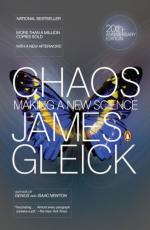
|
| Name: _________________________ | Period: ___________________ |
This test consists of 5 multiple choice questions, 5 short answer questions, and 10 short essay questions.
Multiple Choice Questions
1. What was the name of the computer manufacturing and retail division of Royal Typewriter which made the early computers RPC 4000 and RPC 9000?
(a) Royal Computing.
(b) Royal Information Systems.
(c) Royal McBee.
(d) Royal Mathematics.
2. Where was Robert May born?
(a) Tokyo, Japan.
(b) Cairo, Egypt.
(c) Sydney, Australia.
(d) Berlin, Germany.
3. Where is the National Weather Service headquartered?
(a) Huntsville, Alabama.
(b) Oklahoma City, Oklahoma.
(c) Silver Spring, Maryland.
(d) Hot Springs, Arkansas.
4. What is the mathematical study of changes in the qualitative or topological structure of a given family, such as the integral curves of a family of vector fields, and the solutions of a family of differential equations?
(a) Theoretical physics.
(b) Fluid dynamics.
(c) Thermodynamics.
(d) Bifurcation theory.
5. In Chapter 3, "Life's Ups and Downs," Gleick writes, "In the emergence of chaos as a new science in the 1970s, _____ were destined to play a special role."
(a) Paleontologists.
(b) Botanists.
(c) Geologists.
(d) Ecologists.
Short Answer Questions
1. Who is attributed to the following quote from Chapter 2, "Revolution": "Of course, the entire effort is to put oneself outside the ordinary range of what are called statistics"?
2. James Yorke is credited with creating what term in reference to science?
3. Where is the European Center for Medium Range Forecasts headquartered?
4. What paper did James Yorke publish in 1975 concerning chaos?
5. In Chapter 2, "Revolution," Gleick writes that the only problem with studying and experimenting with a new science is what?
Short Essay Questions
1. When and where was the National Meteorological Center founded in Chapter 1, "The Butterfly Effect"? What existed before it?
2. How is Robert May described in Chapter 3, "Life's Ups and Downs"? What did his work center on?
3. How is Edward Lorenz described in Chapter 1, "The Butterfly Effect"? Where was he working at the time?
4. What impact did The Structure of Scientific Revolutions have on the scientific community? What did Kuhn assert in the book?
5. How is James Yorke described in Chapter 3, "Life's Ups and Downs"? What term did he coin?
6. How did Benoit Mandelbrot describe the ideal data source in Chapter 4, "A Geometry of Nature"?
7. How did Lorenz's work influence James Yorke in Chapter 3, "Life's Ups and Downs"?
8. What led to Benoit Mandelbrot's epiphany in Chapter 4, "A Geometry of Nature"? Where was Benoit Mandelbrot working at the time?
9. How did the role of chaos theory affect ecologists in the 1970s as described in Chapter 3, "Life's Ups and Downs"?
10. What did Edward Lorenz develop in order to assist in working with computer technology in Chapter 1, "The Butterfly Effect"? How did he feel about the future of forecasting?
|
This section contains 983 words (approx. 4 pages at 300 words per page) |

|




